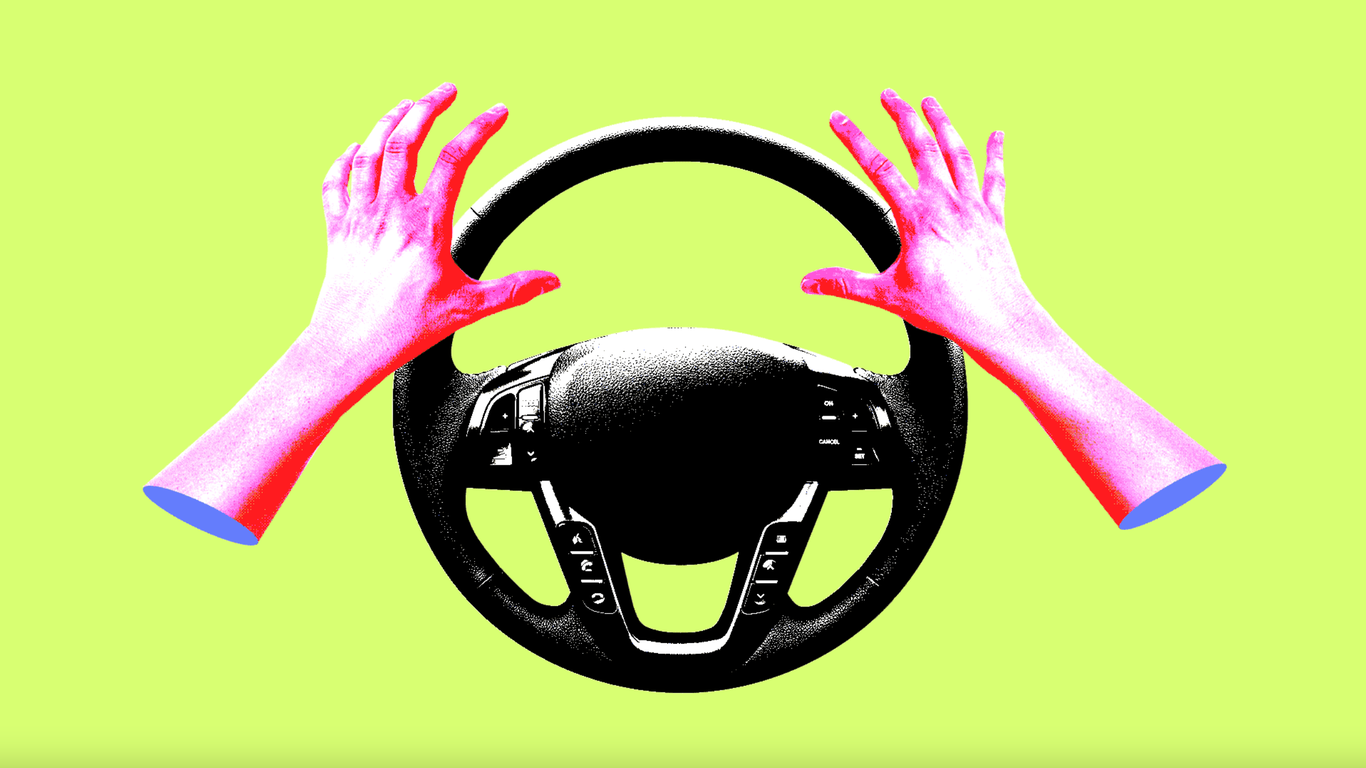
Starting in 2023, owners of some premium General Motors vehicles will be able to push a button and navigate hands-free in 95% of driving situations — including highways, subdivisions and city streets.
Why it matters: Ultra Cruise — the next-generation assisted-driving technology that GM introduced Wednesday — is a giant step forward in the automaker's goal of "zero crashes, zero emissions and zero congestion."
- GM says it will ultimately enable "door-to-door" hands-free driving on virtually any paved road in the U.S. and Canada.
The catch: Then as now, drivers will always have to pay attention — even when the car is doing the driving — in case they need to take back control.
The big picture: Tesla has long promised door-to-door, hands-free trips with its AutoPilot technology and is currently rolling out a beta version of its so-called "full self-driving" (or FSD) system.
- But the vision so far does not match reality. Tesla drivers must continually touch the steering wheel to register attentiveness, and unlike GM, there is no driver-monitoring system to track your gaze while you rest your hands in your lap.
What's happening: GM says Ultra Cruise will co-exist with its current driver-assistance system, Super Cruise, to make the technology accessible to customers at all price levels.
- The more advanced Ultra Cruise will be reserved for premium vehicles like Cadillac, while Super Cruise — limited to hands-free highway driving — will be available on more mainstream vehicles like Chevrolet.
- When Ultra Cruise launches in 2023, it will cover more than 2 million miles of roads in the U.S. and Canada — 10 times as many as today's Super Cruise. Eventually, it will cover 3.4 million miles.
How it works: Ultra Cruise, which GM developed in-house, works through a combination of cameras, radars and LiDAR, providing a 360-degree, three-dimensional view of the vehicle's surrounding environment.
- The system can continually add features, functions and services via over-the-air software updates.
Ultra Cruise goes beyond Super Cruise with new automated driving features that can follow navigation routes.
- Plug in your office commute, for example, and the car can automatically navigate from the end of your driveway to your employer's parking garage.
- That means it can handle stop signs, traffic lights, left- and right-hand turns, highway merges and exits — 95% of driving scenarios, GM says.
- As long as the driver stays engaged, it can even handle a cross-country road trip.
What it can't handle: Pop-up construction or confusing roundabouts, for example, aren't in the repertoire.
- In those cases, the car will trigger a "non-urgent escalation" — that is, a light on the steering wheel will alert the driver to take control momentarily, and then the system will re-engage, according to Jason Ditman, chief engineer of Ultra Cruise.
- Touch sensors in the steering wheel will notify the car that the driver has regained control. If the driver doesn't respond, the car will issue a more urgent alert — the light bar will flash red — and eventually safely come to a stop if necessary.
What to watch: GM isn't saying which vehicles will get Ultra Cruise, but it's safe to expect Cadillac models will be first.
- Nor is the company saying how much it will cost, but it seems likely to be offered as a monthly subscription.
GM will vastly expand hands-free driving by 2023 - Axios
Read More

No comments:
Post a Comment